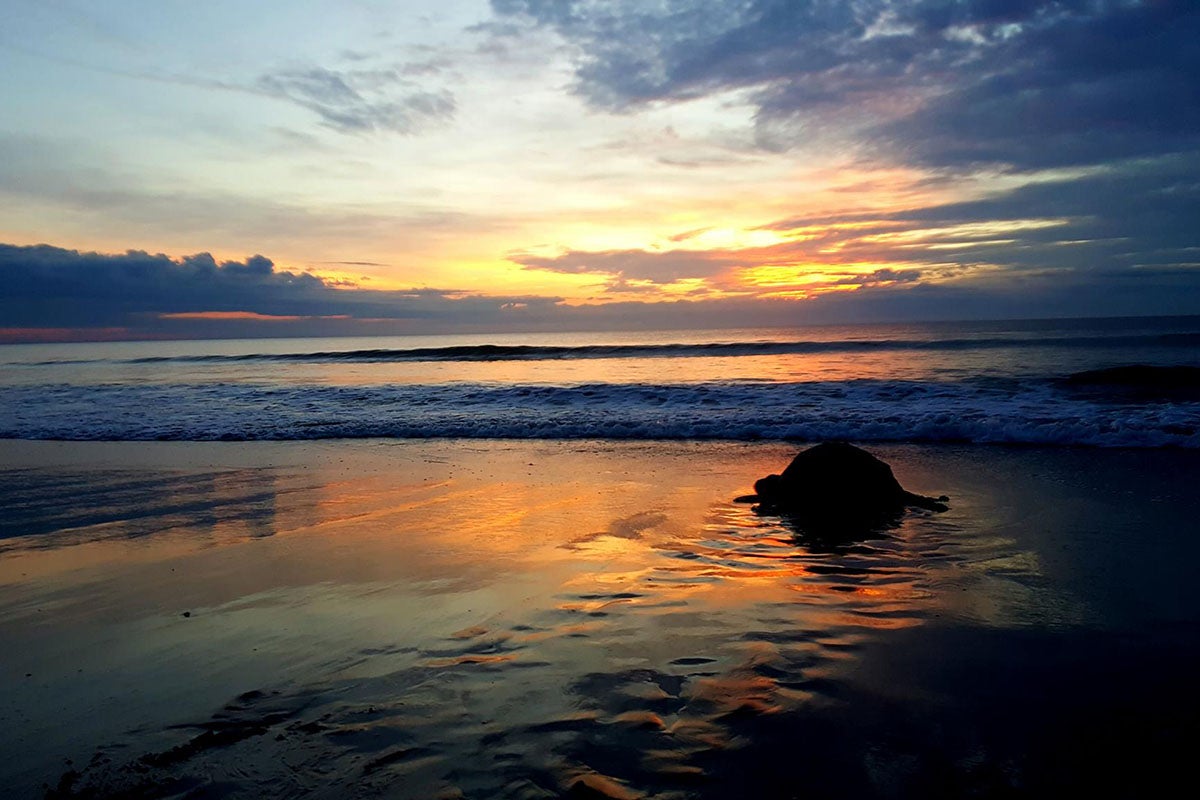Today is World Sea Turtle Day, which celebrates sea turtles and their conservation. The day was selected in 2000 to coincide with the birthday of Archie Carr, who is considered the father of sea turtle biology because he spent his entire career on sea turtle research and conservation.
Since the 1970s, UCF researchers have helped collect data that demonstrates the importance of Florida’s beaches to the life cycle of green, leatherback and loggerhead sea turtles. Central Florida’s Atlantic coastline is among the most important nesting areas in the world for loggerheads and hosts about one-third of all green turtle nests in the state.
Because of data collected by UCF researchers, a stretch of beach from southern Brevard County to Indian River County was set aside to help protect the endangered sea turtles. It’s now known as the Archie Carr National Wildlife Refuge. The UCF Marine Turtle Research Group conducts much of its year-round research in the Brevard County portion of the refuge.
The UCF team of conservation biologists and students has been monitoring nesting on the Brevard portion of the refuge for nearly 40 years and has monitored other Brevard beaches for more than 30 years. Beach and water data generated by the lab are invaluable for conservation efforts and provide UCF undergraduate students unique hands-on experience, which prepares them for graduate school and jobs.
UCF’s group is the only organization authorized to conduct sea turtle monitoring and nest marking throughout the 13 northern-most miles of the refuge and the Brevard County mid and south beaches under permits from the Florida Fish and Wildlife Conservation Commission. The UCF team also monitors Patrick Air Force Base in conjunction with the U.S. Air Force.
The group is celebrating World Sea Turtle Day today by continuing his research legacy. This is the height of sea turtle nesting season and more than 6,000 sea turtle nests have been counted by UCF on the Brevard County portion of the refuge since March with many more expected throughout the summer and early fall. The nesting season concludes in October.
Here are the three species commonly found locally. The information comes from the UCF team’s Facebook page, as part of the global #SeaTurtleWeek education efforts.
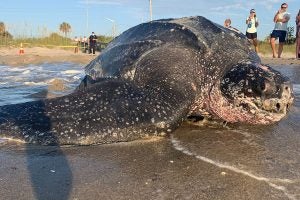
Leatherbacks are the largest species of turtle in the world and truly are modern dinosaurs. Weighing in between 600-800 pounds and growing up to 6 feet in length, it takes a great deal of effort for them to crawl on land. But in the water, they are graceful and powerful swimmers that can dive to depths in excess of 2,000 feet. They dive to forage on jellyfish and other gelatinous prey.
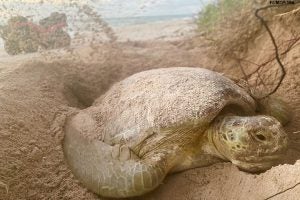
Green turtles are a wonderful story of conservation success in the U.S. and elsewhere. In the 1980s, there were fewer than 100 green turtle nests in the Archie Carr refuge. Now in a good year there are more than 15,000 nests. What happened? Killing green turtles for their meat was the main cause for their U.S, decline. But when conservation laws such as the Endangered Species Act of 1973 were passed, that made it illegal to kill or harm green turtles and it led to a strong population recovery. This isn’t only a story happening in the U.S. Green turtle populations around the globe are rising. Conservation works.
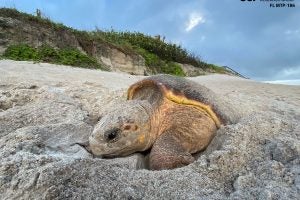
Loggerheads, have the highest density of nesting in the world along Florida’s Atlantic coast. Each year more than 90,000 loggerhead nests are made on Florida beaches. That means that measures we take in Florida to protect and conserve our turtles have a global impact. Loggerheads in the U.S. are still considered threatened because of fisheries bycatch that kill many turtles each year, so if their legal protections went away the population would likely swiftly decline.
Other sea turtles less commonly found in our area:
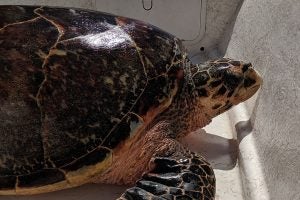
Hawksbills are the only sea turtles that relies upon sponges for food, and they use their pointy beaks to snip off pieces of sponge. In the turtle world, hawksbills are known for their tendency to nest in denser vegetation than other turtles. It’s not known why they do this, but it could be to keep their nests cooler or provide protection from predators. They are often considered the most beautiful sea turtle species because of their spectacular shell patterns.
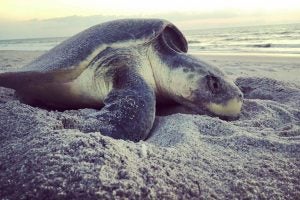
The Kemp’s ridley is an uncommon visitor to Florida waters and beaches partly because it is the most endangered of the sea turtles. The only major nesting beaches for Kemp’s ridleys are in southern Texas and northern Mexico on the coast of the Gulf of Mexico. Kemp’s ridleys were majorly impacted by egg harvesting and the killing of adults for food, and are still coming back from those impacts and the impacts of the BP oil spill in the northern Gulf. UCF’s research group finds one or two Kemp’s nesting on our beaches each year, and UCF researchers have tracked more than 20 oceanic juvenile Kemp’s in offshore satellite tracking.
